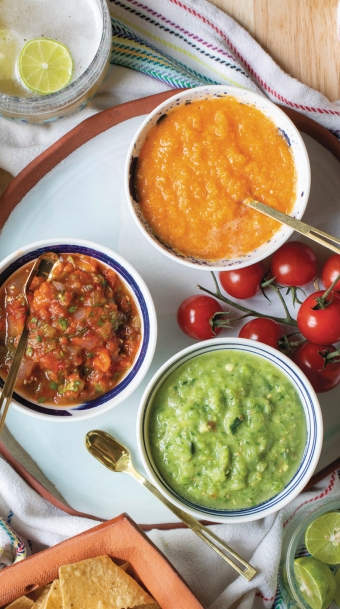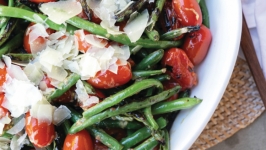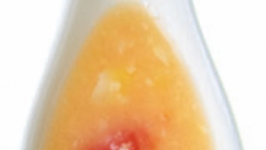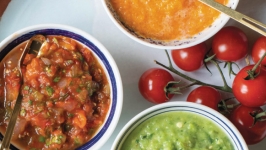Salsa
When you read an ingredients list that includes tomatoes, onions, cilantro, and jalapenos, what comes to mind? Salsa, right? I don’t think I’m alone when I say, “Salsa is my love language.” A contender for my favorite food on the planet, I’ve been known to eat chips and salsa for breakfast.
But what exactly is salsa? When I think of salsa, the traditional restaurant salsa comes to mind. And this girl LOVES restaurant-style salsa.
But salsa is so much more than an accessory to a tortilla chip. Salsa, as defined by Webster, is simply “a spicy sauce.” That broad definition makes room for infinite flavors that can effortlessly reflect seasons and regions or even just what’s currently in my refrigerator. There’s roasted salsa, verde salsa, sweet salsa, fruit salsa, blazing hot pepper salsa, and bean salsa, to name a few. So, what actually makes it salsa?
Well, I asked a local salsa expert, Lupe Garcia, owner of Trompudo’s Tacos, this very question and he explained it like this: “A good salsa makes sense. It’s every ingredient in moderation and everything in balance. It’s spice and heat but not just to be hot. It’s a balance between the acid, heat, salt, and sweet that makes a salsa recipe so delicious.”
So, whether it’s smoky and roasted, fruity and hot, or fresh and traditional, salsa needs to be a teammate to the rest of the meal. With those broad guidelines in mind, let’s look at salsa three ways.
Need a few tips for making exceptional salsa?
1 Think outside the box. Use a few unexpected ingredients like jicama and carrots. Using non-traditional ingredients is always a fun change of pace.
2 Utilize an unexpected cooking method. Whether charcoal grilled or oven-blistered, applying a thoughtful cooking method to even a traditional list of salsa ingredients can create something noteworthy and new.
3 Check out your local international grocery store. Whether Mexican or Middle Eastern, these grocery stores are sure to offer unique varieties of produce and spices that are certain to influence your next favorite salsa. A special thanks to Lupe Garcia for sharing his valuable salsa-making knowledge as I researched for this article.









